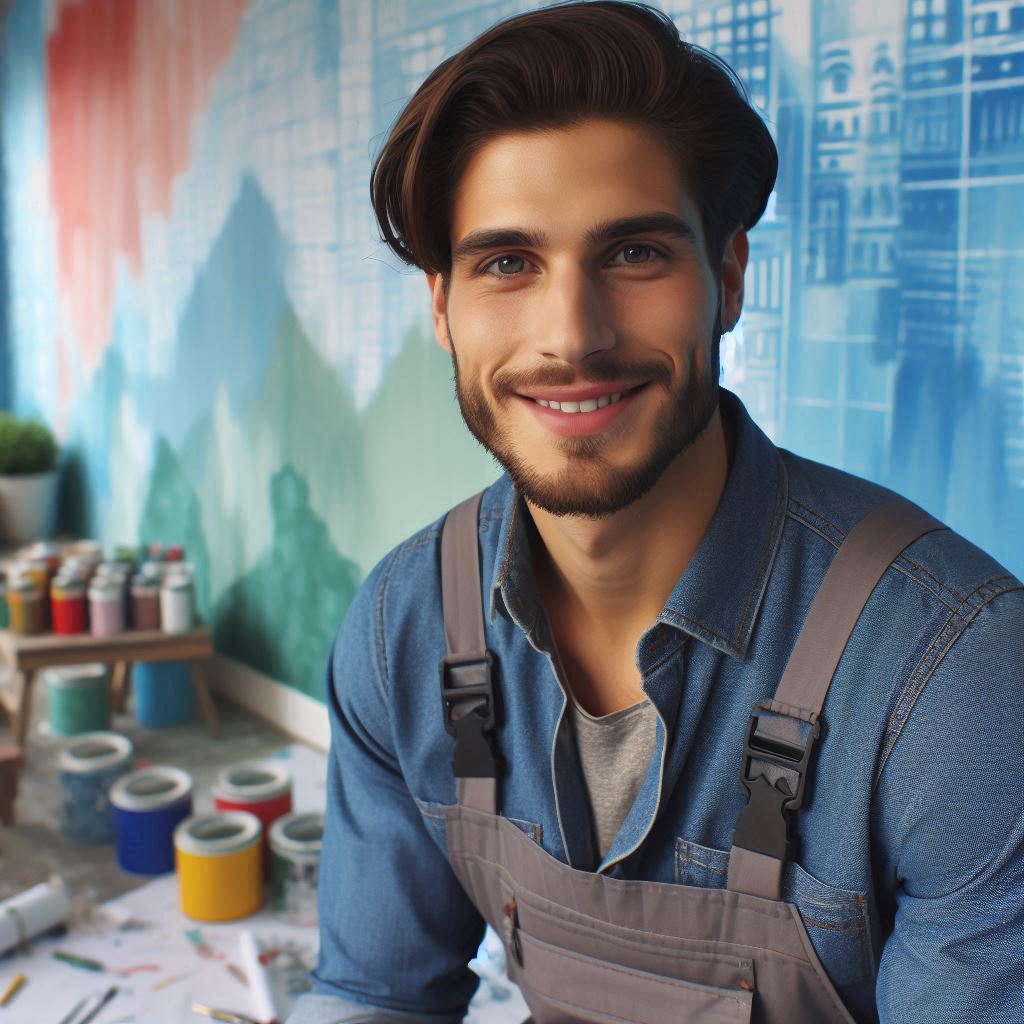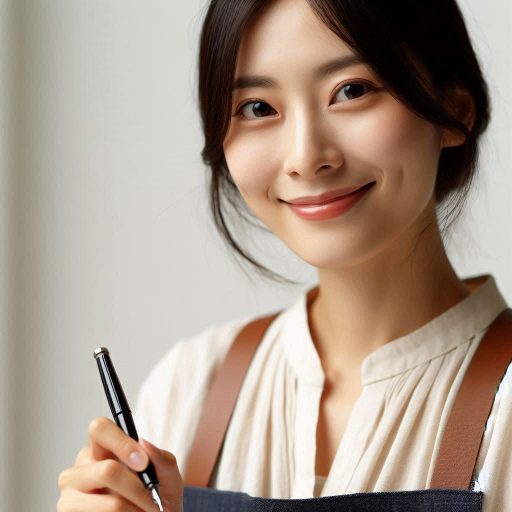Introduction
Modern mural art has evolved significantly over the years, reflecting changing societal values and artistic trends.
Technology has played a crucial role in shaping the contemporary art scene, providing artists with innovative tools and techniques to enhance their craft.
In this blog post, we will explore how technology is influencing modern mural art and reshaping the way artists create and showcase their work.
Integration of Digital Tools
Modern mural artists are increasingly incorporating digital tools such as projectors and graphic design software into their creative process.
These tools allow artists to plan and visualize their murals in advance, enabling more precise and intricate designs.
Additionally, digital tools help artists experiment with different color palettes, textures, and compositions, resulting in more dynamic and visually impactful murals.
Interactive Mural Installations
Technology has enabled artists to create interactive mural installations that engage viewers in new and exciting ways.
From augmented reality murals that come to life through a mobile app to interactive projections that respond to audience interactions, modern mural art has become a multisensory experience that blurs the line between art and technology.
These interactive elements not only captivate viewers but also create opportunities for artists to convey powerful messages and narratives through their work.
Global Collaboration and Exposure
Advancements in technology have facilitated global collaboration among mural artists, allowing them to connect with peers from around the world and work on large-scale projects together.
Social media platforms and online art communities have also provided artists with a platform to showcase their work to a global audience, leading to increased exposure and recognition.
As a result, modern mural art has become more inclusive and diverse, incorporating a variety of artistic styles and cultural influences.
In essence, technology is revolutionizing modern mural art by providing artists with new tools, opportunities, and platforms to express their creativity.
From digital tools that enhance the creative process to interactive installations that engage viewers, technology has reshaped the way artists create and present their murals.
As technology continues to evolve, we can expect modern mural art to push boundaries and inspire audiences in new and innovative ways.
Evolution of Mural Art
From ancient civilizations to modern times, mural art has undergone significant evolution.
Traditional techniques involved painting directly on walls or ceilings using materials like fresco or tempera.
Throughout history, mural art has served various purposes including storytelling, cultural expression, political propaganda, and religious symbolism.
Different cultures have their unique styles and themes reflected in their murals.
In recent years, there has been a noticeable shift towards modern mural art styles and themes.
Transform Your Career Today
Unlock a personalized career strategy that drives real results. Get tailored advice and a roadmap designed just for you.
Start NowArtists are incorporating technology into their work, blending traditional techniques with digital tools to create innovative pieces.
History and Traditional Techniques of Mural Art
Ancient civilizations such as the Egyptians and Romans used murals to adorn their temples and tombs.
During the Renaissance era, artists like Michelangelo and Raphael created iconic frescoes in churches and palaces.
Traditional techniques like fresco, secco, and tempera involved mixing pigments with water or binding agents and applying them directly onto walls.
Key Characteristics and Purposes of Mural Art in Different Cultures
Asian cultures like Chinese and Indian have a long history of using murals to depict mythological stories and religious teachings.
Latin American muralists such as Diego Rivera and David Alfaro Siqueiros used murals to convey social and political messages to the masses.
African tribes painted murals on their huts as a form of decorative art and to communicate their beliefs and traditions.
Shift Towards Modern Mural Art Styles and Themes
Contemporary mural artists are exploring new techniques like spray painting, digital projections, and mixed media to create visually striking pieces.
Themes in modern mural art range from social justice and environmental activism to abstract patterns and pop culture references.
Technology is playing a significant role in influencing modern mural art by enabling artists to experiment with new forms of expression.
Overall, the evolution of mural art showcases the dynamic relationship between tradition and innovation, with technology serving as a powerful catalyst for pushing the boundaries of creativity in this ancient art form.
Read: Top Mural Art Festivals and Events in the USA
Technology Tools for Mural Art
When it comes to mural art, technology has opened up a whole new world of possibilities for artists.
From digital tools to software, there are numerous resources available that can enhance the design, planning, and execution of murals.
Digital Tools and Software
One of the key ways technology is influencing modern mural art is through the use of digital tools and software.
Artists now have access to programs like Adobe Illustrator and Photoshop, which allow them to create intricate designs and visualize their ideas before painting them on a large scale.
Additionally, there are specialized software programs like SketchUp that enable artists to plan out the logistics of their murals, including measurements, color schemes, and perspective.
This digitalization of the design process has streamlined the planning stage and made it more efficient for artists to bring their vision to life.
Design, Planning, and Execution
Technology has revolutionized the way artists approach the design, planning, and execution of murals.
With the help of tools like digital projectors, artists can project their designs onto walls with pinpoint accuracy, ensuring that every detail is captured perfectly.
Transform Your Career Today
Unlock a personalized career strategy that drives real results. Get tailored advice and a roadmap designed just for you.
Start NowFurthermore, artists can now create digital mockups of their murals, allowing them to experiment with different color palettes and compositions before they start painting.
This digital workflow not only saves time and materials but also gives artists the freedom to make changes on the fly without having to redo large sections of their work.
Benefits of Using Technology in Mural Art
- Enhanced Design Capabilities: Technology allows artists to create complex designs with precision and detail.
- Efficient Planning: Digital tools streamline the planning process and make it easier to visualize the final mural.
- Cost-Effective Execution: By using digital mockups, artists can reduce material wastage and ensure a more efficient painting process.
- Improved Accessibility: Technology has made mural art more accessible to a wider audience, allowing artists to showcase their work on digital platforms.
Challenges of Using Technology in Mural Art
- Technical Skill Requirement: Artists need to be proficient in using digital tools and software, which can be a steep learning curve for some.
- Limitations of Digital Projection: While digital projectors are useful for accuracy, they may not always be practical for outdoor murals or uneven surfaces.
- Dependency on Technology: Relying too heavily on technology can sometimes hinder the creative process and limit artistic freedom.
- Accessibility Concerns: Not all artists have access to the latest technology, which can create disparities in the art community.
In fact, technology has undeniably influenced modern mural art in significant ways.
While there are challenges to overcome, the benefits of integrating technology into the creative process far outweigh the drawbacks.
By embracing digital tools and software, artists can push the boundaries of their art and create stunning murals that captivate audiences around the world.
Read: Mural Art Techniques: From Sketch to Wall
Augmented reality in mural art
How augmented reality is transforming the way murals are experienced
Augmented reality (AR) is transforming how we experience mural art today.
This technology allows murals to move beyond static visuals.
By overlaying digital elements onto physical artwork, AR brings murals to life.
Viewers can interact with the artwork through their smartphones or AR glasses.
This shift in how we engage with murals is creating more dynamic and engaging art experiences.
Examples of interactive and dynamic murals using AR technology
Several examples of murals incorporate AR to enhance interactivity.
One notable example is the “Snapchat City Painter” in London.
It lets users add their own digital layers to a physical mural using the Snapchat app.
Another AR mural in Brooklyn, New York, brings elements of the painting to life when viewed through a smartphone app.
These interactive experiences transform traditional murals into evolving, multi-layered artworks that captivate viewers.
Potential for engaging audiences and creating immersive experiences
The potential for engaging audiences through AR murals is vast.
AR allows artists to add sound, motion, and interactive features to their creations, making them more immersive.
Viewers are no longer passive observers; they become participants in the artwork.
By tapping into AR, artists can build richer connections with their audience and tell deeper stories.
Transform Your Career Today
Unlock a personalized career strategy that drives real results. Get tailored advice and a roadmap designed just for you.
Start NowIn general, AR technology is reshaping the mural art experience.
By merging physical art with digital interaction, AR enhances engagement and creates immersive experiences.
As AR continues to develop, we can expect more innovative uses in the world of mural art, drawing larger audiences and transforming public spaces.
Read: Navigating Legalities: Permits and Contracts for Murals

Social media and mural art
With the rise of social media platforms like Instagram and Facebook, mural art has gained significant visibility and popularity in recent years.
Impact of social media on the visibility and popularity of mural art
Social media has provided artists with a global platform to showcase their work to a larger audience.
Artists can now reach art enthusiasts, collectors, and potential clients from different parts of the world.
Hashtags, geotagging, and sharing features on social media have made it easier for people to discover and appreciate mural art.
Many mural artists have seen their careers take off after gaining exposure on social media platforms.
How artists use platforms like Instagram to showcase their work
Instagram, in particular, has become a go-to platform for artists to display their portfolio of mural projects.
Artists create visually appealing feeds that attract followers and generate interest in their art pieces.
They use Instagram Stories and IGTV to provide behind-the-scenes glimpses into their creative process.
Interaction with followers through comments and direct messages helps build a loyal fan base for artists.
Role of social media in promoting collaboration and community engagement in mural projects
Social media has facilitated collaborations between artists, allowing them to work together on large-scale mural projects.
Artists can connect with local communities through social media to understand their stories and themes for murals.
By sharing progress photos and updates on social media, artists involve the community in the creative process.
Social media also helps in spreading the word about upcoming mural projects and garnering support from the public.
In short, social media has revolutionized the way mural art is perceived, created, and shared in the modern world.
Artists now have a powerful tool at their disposal to showcase their work, collaborate with others, and engage with communities on a global scale.
Read: Inspiration Sources for Stunning Mural Designs
Transform Your Career Today
Unlock a personalized career strategy that drives real results. Get tailored advice and a roadmap designed just for you.
Start NowVirtual reality and mural art
Role of VR in the creation and viewing of murals
Virtual reality (VR) is transforming how mural art is created and experienced.
Artists are using VR to design murals in a completely digital environment.
This shift allows them to experiment with scale, perspective, and colors without traditional constraints.
With VR, muralists can try out different concepts and immediately see how their work fits within a space.
This innovation saves time and resources by enabling faster revisions and adjustments.
Possibilities for artists to experiment with scale, perspective, and design in a virtual space
In virtual spaces, artists can explore new possibilities with the design and presentation of their murals.
The immersive nature of VR allows them to manipulate the viewer‘s perspective and scale in ways that would be impossible in physical environments.
This opens up the door for more creative and experimental designs, blending artistic expression with cutting-edge technology.
Potential for VR to democratize access to mural art and reach wider audiences
Additionally, VR is democratizing access to mural art, allowing more people to experience these works from anywhere in the world.
Traditionally, murals are tied to specific physical locations, limiting who can see them.
With VR, artists can share their murals virtually, reaching wider and more diverse audiences.
Viewers can explore and interact with these murals without the need for travel or physical presence.
By expanding the reach of mural art, VR also provides new opportunities for artists to gain exposure and collaborate globally.
This technological shift is bridging cultural and geographical divides, making mural art more accessible and interactive for people everywhere.
As VR technology continues to evolve, the possibilities for its impact on mural art will only grow.
In review, VR is revolutionizing how murals are designed, experienced, and shared.
It offers artists the tools to explore new dimensions and reach audiences worldwide.
Sustainability and technology in mural art
Environmental concerns associated with traditional mural art materials
Traditional mural art materials such as oil-based paints and aerosol cans contain harmful chemicals that can pollute the air and water sources.
The production and disposal of these materials contribute to environmental degradation and pose health risks to both artists and the community.
In addition, the process of creating murals using these materials can release toxins into the environment, further exacerbating the issue.
Transform Your Career Today
Unlock a personalized career strategy that drives real results. Get tailored advice and a roadmap designed just for you.
Start NowUtilization of sustainable technology in mural creation
To address these environmental concerns, many artists are turning to sustainable technology in mural creation.
One example is the use of recycled materials and sustainable resources to create murals that have a lower impact on the environment.
By utilizing solar-powered lights or energy-efficient technology, artists can reduce their carbon footprint while still producing impactful works of art.
Exploration of eco-friendly paints, digital projections, and other green innovations in modern murals
Many artists are now opting for eco-friendly paints that are non-toxic and biodegradable, reducing the negative impact on the environment.
Digital projections are also being used to create dynamic and interactive murals that can change over time, reducing the need for constant repainting.
Other green innovations, such as using plants or living walls in mural art, are gaining popularity for their aesthetic appeal and environmental benefits.
Overall, the intersection of sustainability and technology in modern mural art is creating new opportunities for artists to make a positive impact on the environment while still expressing their creativity.
Collaborative opportunities through technology
How technology is enabling artists to collaborate remotely on mural projects
Collaborative opportunities through technology are revolutionizing the way modern mural art is created.
Artists no longer need to be physically present in the same location to work together on a project.
Instead, they can collaborate remotely, thanks to the advancements in technology.
Advantages of virtual teamwork and shared digital platforms for mural creation
One of the key advantages of using technology for collaborative mural projects is the accessibility it provides.
Artists from different parts of the world can come together to work on a single piece, bringing diverse perspectives and styles to the project.
This diversity of thought can result in more innovative and impactful mural artworks.
Virtual teamwork and shared digital platforms play a crucial role in streamlining the collaborative process.
Through platforms like Google Docs, Dropbox, or project management tools, artists can easily share ideas, sketches, and feedback in real-time.
This level of connectivity and instant communication allows for more efficient and effective collaboration.
Additionally, technology has made it possible for artists to work on different aspects of a mural simultaneously.
For instance, an artist can focus on designing the layout of the mural while another works on sketching out specific details.
This parallel workflow not only speeds up the creation process but also allows for greater creativity and experimentation.
Examples of successful collaborations that have been facilitated by technology
Successful collaborations that have been facilitated by technology serve as inspiring examples of what can be achieved through virtual teamwork.
Transform Your Career Today
Unlock a personalized career strategy that drives real results. Get tailored advice and a roadmap designed just for you.
Start NowArtists have come together to create stunning murals that showcase the power of collaboration and the fusion of different artistic styles.
These projects demonstrate the limitless possibilities that technology offers for modern mural art.
In a nutshell, technology has transformed the way artists collaborate on mural projects, opening up new opportunities for creativity and innovation.
By embracing virtual teamwork and shared digital platforms, artists can push the boundaries of traditional mural art and create impactful works that resonate with audiences worldwide.
Explore Further: How Creative Directors Influence Brand Identity
Conclusion
Technology has revolutionized modern mural art by allowing artists to create larger-than-life masterpieces.
The use of digital tools and techniques has enabled artists to bring their visions to life in ways previously unimaginable.
The accessibility of digital platforms and tools has democratized the creation of murals, opening up opportunities for artists of all backgrounds to showcase their talents on a global scale.
The transformative impact of technology on modern mural art cannot be understated.
Artists are now able to push boundaries, experiment with new styles, and reach audiences far beyond their local communities.
As we move forward, it is important to continue exploring the intersection of art and technology in the mural world.
By supporting artists who utilize technology in their work, we can help drive innovation and creativity in the art world.
I encourage readers to explore and support this exciting fusion of art and technology, as it has the potential to shape the future of modern mural art in remarkable ways.
Let’s embrace this digital age and witness the incredible transformation it brings to the world of murals.
[E-Books for Sale]
The Big Book of 500 High-Paying Jobs in America: Unlock Your Earning Potential
$19.99 • 500 High-Paying Jobs • 330 pages
Explore 500 high-paying jobs in America and learn how to boost your career, earn more, and achieve success!
See All 500 High-Paying Jobs of this E-Book
1001 Professions Without a Degree: High-Paying American Jobs You Can Start Now
$19.99 • 1001 Professions Without a Degree • 174 pages
Discover 1001 high-paying jobs without a degree! Unlock career tips, skills, and success strategies for just $19.99!




